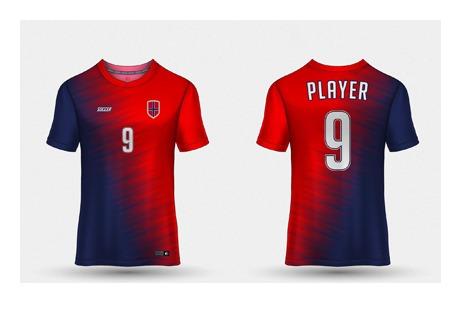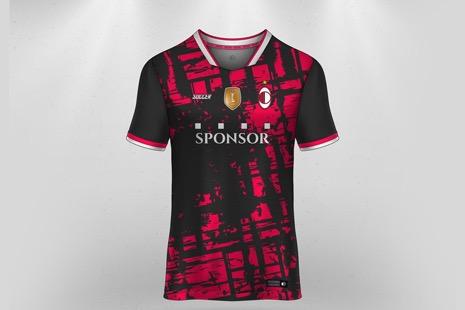Why Uniforms Are Essential in Security and Facilities Management
Corporate uniforms play a crucial role in Dubai’s security and facilities management sectors, a city known for its modernity, efficiency, and high service standards. It is a global tourism, business, and luxury hub prioritizing safety and security. Uniforms are not just clothing; they symbolize professionalism, identity, and reliability. This blog explores why uniforms are essential in Dubai’s security and facilities management industries.
1. Professionalism and Corporate Identity
Uniforms are crucial in establishing professionalism and corporate identity within the security and facilities management sectors. They create a sense of unity among employees and present a cohesive image to clients and the public. In Dubai, where first impressions are paramount, a well-designed uniform reflects the company’s commitment to excellence and attention to detail.
2. Enhancing Security and Safety
For security personnel, it serves practical purposes beyond aesthetics. They are immediately identified, allowing them to monitor and respond quickly to situations. Uniforms also contribute to safety by incorporating features like reflective strips or specialized materials suitable for various working environments, including construction sites or commercial buildings.
3. Building Trust and Credibility
Uniforms foster trust and credibility in a multicultural city like Dubai, where businesses cater to a diverse clientele. Clients and residents feel reassured when they can quickly identify authorized personnel through their uniforms. This transparency contributes to a sense of security and reinforces positive perceptions about the organization’s reliability and professionalism.
4. Compliance with Regulations
Dubai, known for its stringent regulations and standards, often mandates using uniforms in specific sectors like security and facility management. Compliance with uniform policies ensures that companies meet industry standards and legal requirements, avoid potential penalties, and maintain operational integrity.
5. Enhancing Brand Visibility
They act as a mobile advertising platform, promoting brand visibility wherever employees go. In Dubai’s bustling environment, where businesses compete for attention, branded uniforms are a subtle yet effective marketing tool. They reinforce brand recognition and leave a lasting impression on clients and stakeholders.
6. Employee Morale and Team Spirit
Wearing uniforms instills a sense of belonging and pride among employees. It fosters team spirit and unity, motivating employees to perform their duties diligently. Teamwork is essential for operational success in Dubai’s fast-paced environment, contributing to a positive work culture and employee satisfaction.
7. Adaptability to Cultural Sensitivities
Dubai is a melting pot of cultures, and uniforms can be tailored to respect and accommodate diverse cultural sensitivities. Companies can design modest, respectful, and culturally appropriate uniforms, ensuring inclusivity and demonstrating respect for the city’s multicultural fabric.
Types of Security Uniforms in Dubai
Security uniforms in Dubai come in various styles to suit the specific role and environment a guard is working in. Here’s a breakdown of some common types:
- Classic Guard Uniform: This is the most recognizable security uniform, typically consisting of a long-sleeved shirt, trousers, and a peaked cap. Color choices often include navy, black, khaki, or grey to convey professionalism and authority. This uniform suit general security duties in office buildings, residential complexes, or retail stores.
- High-Visibility Uniform: Security guards wear high-visibility uniforms in situations with low-light conditions or where increased visibility is crucial. These uniforms are primarily bright yellow or orange and decorated with reflective stripes to ensure motorists or passersby can easily see the guard. Construction zones, parking lots, and roadways commonly use them.
- Hotel Security Uniform: Presentation is critical in Dubai’s luxurious hospitality industry. Hotel security guards typically wear a more formal uniform that complements the hotel’s branding. It might include a blazer, dress pants, and a tie. The goal is to project a professional and approachable image that aligns with the guest experience.
- Specialized Security Uniform: Specialized uniforms prioritize safety and function over aesthetics for security guards working in high-risk environments.Bulletproof vests become essential for guards working in banks, jewelry stores, or other areas susceptible to armed robbery. Similarly, riot gear may be necessary for crowd control or large gatherings.
Beyond these fundamental categories, you can further customize Dubai security uniforms with the following features:
- Identification: The prominently displayed name tags on the uniform allow for easy identification and foster public trust.
- Rank Insignia: For security companies with hierarchical structures, epaulets or badges may denote a guard’s rank or area of expertise.
- Security Badges: Official security badges issued by a regulatory body or the security company visually confirm the guard’s authorization and qualifications.
- Body Cameras: The increasing use of body cameras in Dubai’s security sector adds another layer of accountability and transparency. Cameras mounted on uniforms provide video evidence of interactions, protecting guards and the public.
Choose the Best Corporate Uniform Supplier in Dubai!
In Dubai’s security and facilities management sectors, uniforms are more than just clothing. They are a symbol of professionalism, trust, and safety. By carefully considering the factors mentioned above, companies can ensure their uniforms contribute to a secure, efficient, and well-managed environment in Dubai. Contact Naziha Uniform for bulk orders, the leading corporate uniform supplier in Dubai.







